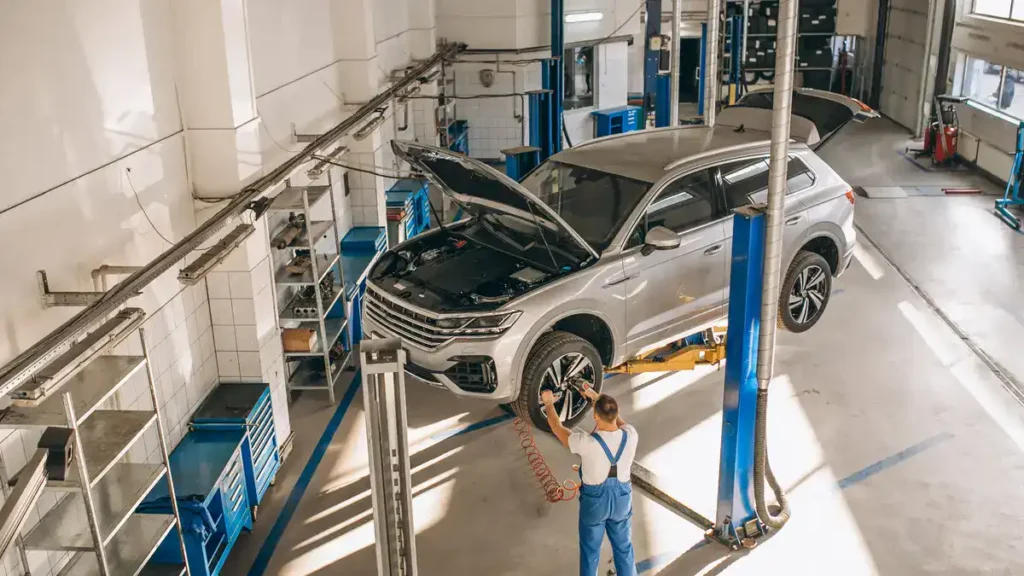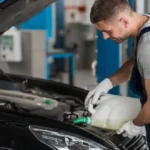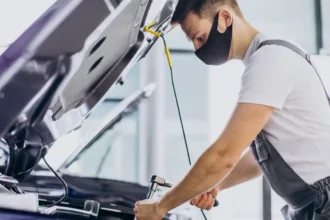Owning a car comes with responsibilities, and one of the most important is following a proper car maintenance checklist. Regular maintenance ensures that your vehicle runs efficiently, extends its lifespan, and prevents costly repairs. This ultimate guide will walk you through everything you need to keep your car in top shape.
Benefits of a Car Maintenance Checklist
Some of the benefits of a car maintenance checklist are:
- Increased Safety: Regular checks prevent accidents due to malfunctioning parts.
- Improved Performance: Your car runs smoother with routine maintenance.
- Saves Money: Avoid costly repairs by addressing small issues early.
- Environmental Impact: A well-maintained car produces fewer emissions.
The Ultimate Car Maintenance Checklist

1. Weekly Checks:
- Exterior Lights: Make sure your headlights, brake lights, and turn signals are functioning properly. Replace any burnt-out bulbs immediately.
- Tire Pressure: Proper tire pressure improves fuel efficiency and handling. Check your tires weekly and fill them to the recommended PSI.
- Windshield Washer Fluid: Ensure your windshield washer reservoir is full, and check the condition of your wiper blades.
| Weekly Maintenance Task | Purpose |
|---|---|
| Check exterior lights | Safety and visibility |
| Monitor tire pressure | Fuel efficiency, tire longevity |
| Top off washer fluid | Clear visibility |
2. Monthly Checks:
- Engine Oil Level: Checking your oil level once a month is essential. If the oil is low or dirty, it could harm your engine.
- Coolant Levels: Your engine relies on coolant to prevent overheating. Make sure the coolant levels are adequate.
- Tire Tread Depth: Use a tread depth gauge to check your tires. Worn tires are dangerous, especially in wet conditions.
- Battery Health: Check for corrosion on battery terminals, and ensure it’s securely mounted. A weak battery can leave you stranded.
3. Every 6,000 Miles:
- Oil and Oil Filter Change: Routine oil changes are a cornerstone of the car maintenance checklist. Fresh oil keeps your engine lubricated and prevents wear.
- Rotate Tires: To ensure even wear and longer tire life, rotate your tires every 6,000 miles.
- Brake Pad Inspection: Brake pads should be inspected regularly to ensure they aren’t too worn. Worn-out brake pads can damage your rotors, leading to expensive repairs.
- Transmission Fluid Check:
Transmission fluid helps keep your gearbox running smoothly. Low fluid can lead to gear slippage or transmission damage.
4. Every 12,000 Miles:
- Air Filter Replacement: A clean air filter improves your car’s fuel efficiency and performance. Replace it every 12,000 miles or as recommended in your owner’s manual.
- Cabin Air Filter Replacement: The cabin air filter keeps dust, pollen, and pollutants out of your car’s interior. Change it regularly for better air quality inside the vehicle.
- Brake Fluid Check: Brake fluid transfers the force from your pedal to the brakes themselves. Over time, it can become contaminated, so check it annually.
5. Annual Checks:
- Full Car Inspection: Once a year, take your car for a full inspection. This includes examining the suspension, exhaust system, and all critical components.
- Battery Load Test: A load test can determine if your battery is still strong enough to function. If it’s weak, it’s time to replace it before you’re left stranded.
The Ultimate Guide to Essential Car Fluids
| Fluid Type | Purpose | Change Interval |
|---|---|---|
| Engine Oil | Lubricates engine parts | Every 3,000-6,000 miles |
| Coolant | Prevents engine overheating | Every 24,000 miles or 2 years |
| Brake Fluid | Transfers brake pedal force | Every 2 years |
| Transmission Fluid | Lubricates transmission components | Every 30,000-60,000 miles |
| Power Steering Fluid | Helps with steering control | Every 50,000 miles or 2 years |
How to Track and Manage Your Car Maintenance
1. Create a Maintenance Log:
Keeping a detailed log of all services performed on your car ensures that you never miss important milestones. You can use a physical notebook or a smartphone app.
2. Use Vehicle Monitoring Apps:
Many apps can monitor your car’s condition and alert you when maintenance is due. They can track everything from oil changes to tire rotations.
3. Follow Your Owner’s Manual:
Every car is different. Always consult your car’s owner manual for specific maintenance schedules and recommendations.
Conclusion
A well-maintained car will serve you longer and help you avoid breakdowns. By following this ultimate guide, you’ll stay on top of all essential maintenance tasks, ensuring your vehicle performs at its best.








